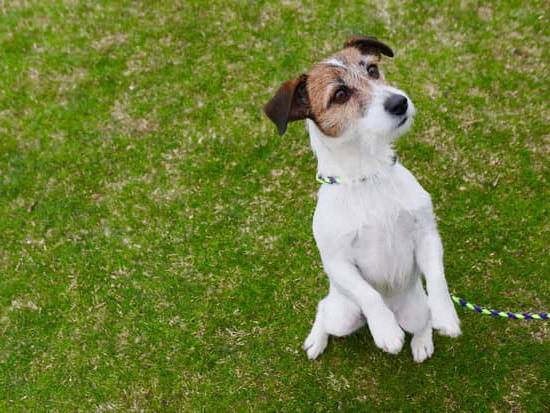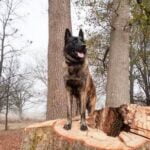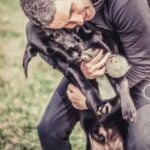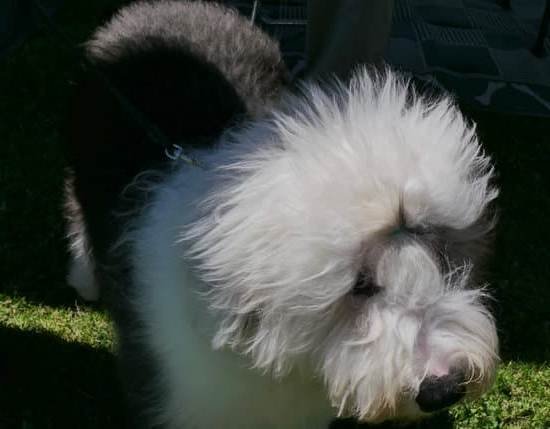When it comes to hunting mountain lions, dogs play a crucial role in tracking, pursuing, and ultimately capturing these elusive predators. In this article, we will delve into the essential aspects of training dogs for mountain lion hunting, covering everything from selecting the right breeds to understanding the legal and ethical considerations of using dogs for this purpose.
Selecting the Right Breeds for Mountain Lion Hunting is the first step in training an effective team of dogs. Different breeds possess varying strengths and characteristics that make them more suitable for mountain lion hunting. From scent detection skills to physical endurance, it’s important to choose breeds that are well-suited for the challenges of hunting these powerful predators.
Once the right breeds are selected, Training the Nose becomes a critical aspect of preparing dogs for mountain lion hunts. Developing their scent detection skills is essential for tracking and locating mountain lions in their territory. This foundational skill sets the stage for all subsequent training in pursuit and capture techniques.
Selecting the Right Breeds for Mountain Lion Hunting
When it comes to training dogs to hunt mountain lions, selecting the right breeds is crucial. Not all dog breeds are suitable for this type of hunting, as it requires specific traits and abilities. The following are some of the best breeds for mountain lion hunting:
1. Plott Hound: Known for their determination and strong tracking abilities, Plott Hounds are excellent mountain lion hunters. They have a keen sense of smell and are relentless pursuers, making them well-suited for this type of hunting.
2. Black and Tan Coonhound: With their exceptional scent tracking skills and endurance, Black and Tan Coonhounds are also popular choices for mountain lion hunting. They are agile and have the stamina to keep up with the challenging terrain.
3. Mountain Cur: As their name suggests, Mountain Curs are natural hunters in rugged terrains. They possess a strong prey drive and excel in treeing game, which is essential for hunting mountain lions in areas with dense vegetation.
When selecting a breed for mountain lion hunting, it’s important to consider factors such as size, temperament, and trainability. These breeds have the innate qualities needed for success in hunting mountain lions and can be trained to develop their skills further.
Training these breeds involves focusing on developing their scent detection skills, physical endurance, strategic tracking and pursuit techniques, obedience in high-stress environments, as well as building a strong bond between hunter and dog. By understanding the unique traits of each breed and tailoring training methods accordingly, hunters can effectively train their dogs to hunt mountain lions using reliable techniques.
Training the Nose
One of the most crucial skills for dogs in mountain lion hunting is their ability to detect and track scents. Without a keen sense of smell and the ability to follow trails, a dog would not be effective in locating mountain lions. To train a dog to hunt mountain lions, it is important to focus on developing their scent detection skills from an early age.
To begin the training process, it is essential to select breeds known for their exceptional sense of smell, such as bloodhounds, coonhounds, or other hound breeds. These breeds are natural scent dogs and have an innate ability to track and follow scents over long distances. Once the right breed has been selected, the focus should shift to specific training exercises that enhance the dog’s olfactory abilities.
Here are some key steps for developing scent detection skills in dogs:
- Introduce scent objects: Start by introducing the dog to different scent objects and allowing them to become familiar with a variety of smells.
- Reward scent recognition: Use positive reinforcement techniques, such as treats or praise, to reward the dog when they successfully identify and indicate a particular scent.
- Practice tracking scents: Create training scenarios where the dog must track and follow specific scents over various terrains to hone their tracking abilities.
By focusing on these fundamental steps, owners can effectively train their dogs to excel in scent detection, making them valuable assets in mountain lion hunting endeavors.
Building Physical Endurance and Strength for Mountain Lion Hunts
Exercise and Conditioning
To prepare a dog for the physical demands of hunting mountain lions, it is crucial to focus on building their endurance and strength. Regular exercise, such as long hikes, jogs, and swims, can help improve the dog’s cardiovascular fitness and muscle strength. Additionally, incorporating activities like agility training and obstacle courses can enhance their agility and flexibility, which are essential for navigating rugged terrains during hunts.
Diet and Nutrition
Maintaining a proper diet is equally important in ensuring that hunting dogs are physically prepared for mountain lion hunts. A balanced diet with high-quality proteins, healthy fats, and essential nutrients can support their energy levels and muscle recovery. Consult with a veterinarian to determine the best diet plan for your hunting dog based on their breed, size, age, and activity level.
Rest and Recovery
In addition to exercise and nutrition, adequate rest and recovery are vital in optimizing a hunting dog’s physical capabilities. Allowing sufficient time for rest between training or hunting sessions can prevent overexertion and injuries. Establishing a regular sleep schedule in a comfortable and stress-free environment will also contribute to the overall well-being and performance of the dog during mountain lion hunts.
By focusing on exercise, nutrition, rest, and recovery methods tailored specifically for hunting dogs, owners can effectively build their physical endurance and strength essential for successful mountain lion hunts.
Ultimately Building Physical Endurance And Strength For Mountain Lion Hunts Involves Consistent Discipline In Training And Lifestyle To Ensure That Dogs Are Always Ready For The Challenges Of The Hunt.
Teaching Strategic Tracking and Pursuit Techniques
One of the key aspects of teaching tracking and pursuit techniques is developing the dog’s natural instincts for hunting. This involves exposing the dog to different scents and teaching them how to distinguish the scent of a mountain lion from other animals. Additionally, dogs must be trained to follow a trail while also discerning when to approach stealthily or when to pick up speed in pursuit.
To effectively teach strategic tracking and pursuit techniques, it is important for hunters to understand how mountain lions behave in their natural habitat. This knowledge allows for more effective training methods that mirror actual hunting scenarios. The combination of understanding the behavior of mountain lions, along with proper training techniques, is essential for success in hunting these elusive predators.
Moreover, consistency and patience are vital when teaching strategic tracking and pursuit techniques to dogs. Training sessions should be frequent and structured, with gradual progression as the dog becomes more proficient in tracking and pursuing mountain lions. Positive reinforcement through treats or praise can also help reinforce desired behaviors during training sessions.
| Key Aspect | Importance |
|---|---|
| Developing Natural Instincts | Teaches dogs how to effectively track mountain lions |
| Understanding Mountain Lion Behavior | Aids in creating effective training methods based on real hunting scenarios |
| Consistency and Patience | Crucial for successful teaching of strategic tracking and pursuit techniques |
Introducing Dogs to the Sights and Sounds of Mountain Lion Territory
Training dogs to hunt mountain lions involves introducing them to the sights and sounds of the mountain lion territory. Mountain lions are elusive and territorial animals that can be found in a variety of landscapes such as forests, deserts, and mountains. It is crucial to acclimate hunting dogs to these environments to ensure they are prepared for the challenges they will face during a hunt.
One important aspect of introducing dogs to mountain lion territory is familiarizing them with the unique scents and sounds of the environment. This includes exposing them to the scent of mountain lions through training aids or real scat, as well as playing recordings of mountain lion vocalizations. By doing so, dogs can learn to recognize these cues and understand what they should be alerting their handler about when on a hunt.
Additionally, exposure to the physical terrain is essential for preparing hunting dogs for mountain lion hunts. Dogs should be given opportunities to navigate varying terrains such as rocky slopes, thick brush, and rugged terrain typical of mountain lion habitat. This exposure helps build confidence in the dogs’ abilities and ensures that they are physically prepared for chasing and confronting mountain lions in their natural environment.
In summary, familiarizing hunting dogs with the sights and sounds of mountain lion territory is an essential part of training them for successful hunts. By exposing them to these elements, handlers can better prepare their dogs for encounters with mountain lions while strengthening their skills and readiness for this challenging pursuit.
Training for Obedience and Communication in High-Stress Environments
Training hunting dogs to obey commands and communicate effectively in high-stress environments is crucial for the success and safety of mountain lion hunts. In these intense situations, it is essential that dogs can follow directions from their handlers and maintain clear communication to ensure a successful hunt while also keeping everyone safe. Here are some key aspects to consider when training dogs for obedience and communication in high-stress mountain lion hunting environments.
Establishing Clear Communication
Effective communication between the hunter and the dog is vital during a mountain lion hunt. Dogs must be trained to understand and respond to a variety of commands, including stop, go, come, stay, and search. Consistent verbal cues, hand signals, and whistle commands should be introduced during training sessions to ensure that the dog can interpret them accurately in high-stress situations.
Stressful Environment Simulation
To prepare hunting dogs for high-stress environments, trainers should create simulations that mimic the conditions of a real mountain lion hunt. This may include introducing loud noises, distractions, obstacles, or sudden changes in terrain during training sessions. By exposing the dogs to these stress-inducing factors in a controlled setting, they can learn to remain focused on their handler’s commands despite external pressures.
Reinforcing Obedience Through Repetition
Consistent repetition of obedience training exercises is essential for ensuring that hunting dogs respond reliably in high-stress environments. Regular training sessions should focus on reinforcing obedience through practice of basic commands while gradually increasing the intensity of distractions and stressors. Additionally, positive reinforcement techniques such as praise or treats can be used to encourage desired behaviors and maintain the dog’s confidence during training.
By diligently focusing on obedience and communication training in high-stress environments, handlers can build a strong working relationship with their hunting dogs and increase the likelihood of successful mountain lion hunts. Ultimately, trust and clear communication between dog and handler are paramount for navigating challenging terrains and pursuing elusive prey effectively.
Understanding the Legal and Ethical Considerations of Hunting Mountain Lions With Dogs
When it comes to hunting mountain lions with dogs, understanding the legal and ethical considerations is crucial. While this type of hunting is legal in some states, there are strict regulations that hunters must adhere to. It’s important to research and understand the specific laws and regulations in your area before embarking on a mountain lion hunt with dogs. This includes obtaining the necessary permits and licenses, as well as following any guidelines set forth by wildlife management authorities.
Ethical considerations also play a significant role in hunting mountain lions with dogs. The humane treatment of both the dogs and the prey is essential, and hunters must prioritize the welfare of all animals involved. This means ensuring that dogs are well-trained to minimize harm to the mountain lion and reduce suffering during the hunt. Additionally, ethical hunters are mindful of conservation efforts and strive to contribute positively to wildlife management through their hunting practices.
In summary, training dogs for mountain lion hunts should always be conducted with a strong emphasis on legality and ethics. Aspiring hunters must familiarize themselves with local laws and regulations while prioritizing the humane treatment of both their dogs and the prey.
Building a strong bond between hunter and dog, disciplined obedience training, appropriate breed selection, physical endurance development, scent detection skills refinement along with strategic tracking capabilities will create a fulfilling experience for both hunter and dog while upholding ethical considerations.
| Legal Considerations | Ethical Considerations |
|---|---|
| Understanding state laws and regulations for hunting with dogs | Prioritizing humane treatment of animals |
| Obtaining necessary permits and licenses | Mindfulness of conservation efforts |
Building a Strong Bond and Trust Between Hunter and Dog
In conclusion, training dogs to hunt mountain lions requires a deep understanding of the role that dogs play in this type of hunting, as well as selecting the right breeds with the necessary skills and abilities. Developing scent detection skills, physical endurance, strategic tracking and pursuit techniques are all crucial aspects of training dogs for this challenging task.
Introducing them to the sights and sounds of mountain lion territory and training them for obedience in high-stress environments are also essential steps.
Furthermore, it is important to consider the legal and ethical considerations of hunting mountain lions with dogs, ensuring that all activities are conducted within the boundaries of the law and in an ethical manner. Finally, building a strong bond and trust between hunter and dog is paramount to success in hunting mountain lions. The relationship between them is what ultimately determines their effectiveness as a team and their ability to work together seamlessly during hunts.
Frequently Asked Questions
What Is the Best Dog for Mountain Lion Hunting?
The best dog for mountain lion hunting is typically a breed that is strong, agile, and has a good sense of smell. Breeds like the Treeing Walker Coonhound, Plott Hound, and American Pit Bull Terrier are often used for this purpose.
Can You Use Dogs to Hunt Mountain Lions?
Yes, dogs can be used to hunt mountain lions. They can track and tree the mountain lion, making it easier for hunters to locate and hunt them. However, using dogs for this purpose requires specific skills and training.
How Do I Train My Dog to Be a Hunting Dog?
Training a dog to be a hunting dog involves teaching basic commands such as sit, stay, and come. It also includes introducing the dog to the sounds and smells of the outdoors, as well as exposing them to different terrains and environments.
Additionally, they should be trained to follow scents and signals when tracking game. Consistent practice and positive reinforcement are essential in training hunting dogs.

Welcome to the blog! I am a professional dog trainer and have been working with dogs for many years. In this blog, I will be discussing various topics related to dog training, including tips, tricks, and advice. I hope you find this information helpful and informative. Thanks for reading!





